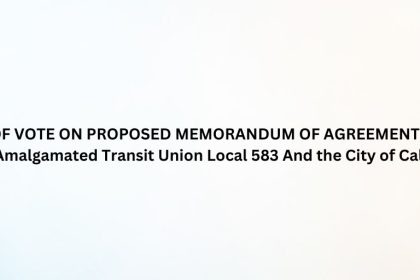Prior to 1971 Maternity leave did not exist in Canada. A new mother would have two options, either return to work immediately after the birth of the child, or she would have to leave her job so her position could be filled. This put mothers in a very tough situation. If their family depended on their income, they would have much less time to bond with their infant in those oh so important first months of life. If they chose to not return to work, they lost that independence (and of course the income).
The Labour Movement wanted to ensure new mothers didn’t have to choose between bonding with their infant and maintaining a career. Thus, maternity leave became a focus.
“The labour movement pushed for changes to make maternity leave more accessible, not only in legislation, but also by bargaining better paid maternity leave for its members. And they didn’t stop at just maternity leave. As early as 1979, Quebec’s Common Front, representing government, education and health workers, negotiated 20 weeks of fully paid maternity, 10 weeks leave when parents adopted a child, and five days of paternity leave! In 1981 after a 42-day strike, the Canadian Union of Postal Workers won postal workers across Canada 17 weeks of paid maternity leave. The concept of longer periods of paid maternity leave than was available through unemployment insurance benefits soon became mainstream and expanded across the country.” (quoted portion from canadianlabour.ca)
“The Unemployment Insurance Act of 1940 introduced unemployment insurance to Canada, but it was another 30 years before the Act provided provisions for maternity leave. Starting in 1971, mothers with 20 or more insurable weeks could claim up to 15 weeks of benefits. Almost two decades later, in 1990, 10 weeks of parental leave benefits were added. These could be used by either parent or split between them (HRDC 1996). Another significant change in December 2000 increased parental leave benefits from 10 to 35 weeks, effectively increasing the total maternity and parental paid leave time from six months to one year. As well, the threshold for eligibility was lowered from 700 to 600 hours of insurable employment.
One aim of the 2000 amendment was to enable working parents to care for their infant for longer and still allow them secure re-entry into employment. After the extension of parental benefits, all provinces and territories revised their labour codes to give full job protection of 52 weeks or more to employees taking paid or unpaid maternity or parental leave.” (quoted portion from Stats Canada)
Of course, today, we continue to fight for better access to parental leave and accommodation for family obligations.
As with so many social safety net programs in Canada, it is organized Labour that has been the driving force and guardian of these programs. Our Local and those affiliated with organizations like the Alberta Federation of Labour and the Canadian Labour Congress are recognized around the world as a voice for all workers and not just those fortunate enough to belong to a Union.
Organized workers remain the only voice strong enough to protect these programs and really are the social conscience of our Country










